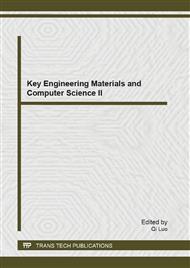[1]
Kizza J M. Computer Communications and Networks, A Guide to Computer Network Security; 2009, Part III, pp.331-350.
Google Scholar
[2]
Cybenko G, Giani A, and Thompson P. Cognitive Hacking: A Battle for the Mind. IEEE Computer; 2002, 35(8), pp.50-56.
DOI: 10.1109/mc.2002.1023788
Google Scholar
[3]
Cybenko G, Giani A, and Thompson P. Cognitive Hacking and the Value of Information. Workshop on Economics and Information Security, Berkeley, California; May 16-17, 2002.
DOI: 10.1007/1-4020-8090-5_19
Google Scholar
[4]
Landwehr C E. Formal models of computer security. ACM Computing Surveys; 1981, 13(3), 247-278.
DOI: 10.1145/356850.356852
Google Scholar
[5]
Gollmann D. Computer security. IEEE computer security; 2010, 2(5), pp.544-554.
Google Scholar
[6]
Libicki M. The mesh and the Net: Speculations on armed conflict in an age of free silicon. National Defense University McNair Paper 28, <http://www.ndu.edu/ndu/inss/macnair/mcnair28/ m028cont.html>; 1994.
DOI: 10.21236/ada278484
Google Scholar
[7]
Bruce Schneier. Semantic Attacks: the third wave of Network attacks. Crypto-gram Newsletter, <http://www.counterpane.com/crypto-gram-0010.html>; October 15, 2000.
Google Scholar
[8]
Thompson P. Semantic Hacking and Intelligence and Security Informatics, NSF / NIJ Symposium on Intelligence and Security Informatics, Lecture Notes in Computer Science, Springer-Verlag, Tucson, Arizona; June 1-3, 2003.
DOI: 10.1007/3-540-44853-5_40
Google Scholar
[9]
Fang B X, Guo Y C, Zhou Y. Information content security on the Internet: the control model and its evaluation. Science China (information Sciences); 2010, 53(1), pp.30-49.
DOI: 10.1007/s11432-010-0014-z
Google Scholar
[10]
Lee P Y, Hui S C, Fong A C M. Neural Networks for Web Content Filtering. IEEE Intelligent Systems; 2002, pp.48-57.
DOI: 10.1109/mis.2002.1039832
Google Scholar
[11]
Hammami M, Chahir Y, Chen L M. WebGuard: A web filtering engine combining textual, structural, and visual content-based analysis. IEEE transaction on knowledge and data engineering; 2006, 18(2), pp.272-284.
DOI: 10.1109/tkde.2006.34
Google Scholar
[12]
Zhang H P. Chinese Lexical Analysis Using Hierarchical Hidden Markov Model. Second SIGHAN workshop affiliated with 41th ACL, Sapporo Japan; July, 2003, pp.63-70.
DOI: 10.3115/1119250.1119259
Google Scholar
[13]
Salton G, Buckley C. Term-weighting Approaches in Automatic Text Retrieval. In: Inf. Proc. of Mgt; 1988, pp.513-523.
DOI: 10.1016/0306-4573(88)90021-0
Google Scholar


